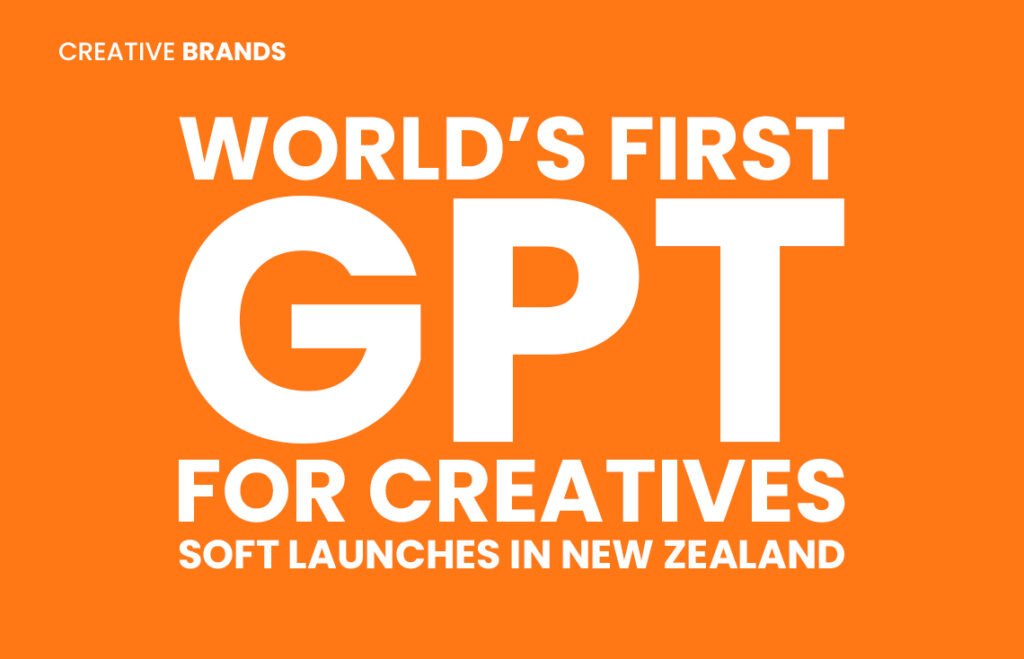JuniorGPT’s limited New Zealand trial is ongoing, with no official release date yet announced. The developers say they welcome constructive feedback from creative leaders as they continue to refine what could be the world’s first truly creative language model.

A mysterious new AI tool is making waves across New Zealand’s advertising world this week — and it could reshape the future of creativity itself.
A select group of Kiwi creatives have been invited to quietly trial JuniorGPT, a new large language model developed specifically for advertising agencies. Billed as a “world first GPT for creatives,” the tool has reportedly been trained for nine months exclusively on advertising-related data — from award jury discussions and case study transcripts to brand strategy frameworks, marketing textbooks, and real-world creative briefs.
A GPT Built for Advertising Minds
Unlike general-purpose AI tools that respond to prompts across a wide range of topics, JuniorGPT positions itself as a specialist designed to think like an advertising professional. Its creators describe it as “not another prompt toy,” suggesting that it could offer strategic and creative depth rather than surface-level text generation.
Industry insiders who have gained early access to the beta version claim the model demonstrates a startling ability to map brand strategy, generate campaign copy, and even simulate creative reasoning with what one tester described as “unsettling fluency.”
“The way it unpacks a brief feels eerily familiar — like chatting with a seasoned planner or a copywriter who’s read every Effie case study ever published,” said one creative director, speaking under anonymity due to the non-disclosure agreements surrounding the trial.
A Secretive Launch
The tool’s soft launch in New Zealand is strictly invitation-only, with the testing confined to a handful of creative departments. Every participant has signed NDAs, and details of the project’s backers remain undisclosed. This secrecy has only added to the intrigue surrounding the initiative.
While no official company has yet claimed ownership, speculation is rife that the project could be funded by a group of private investors — possibly tech entrepreneurs or advertising veterans looking to test the limits of AI’s role in creativity before going public.
In a brief statement released to the press, the developers said the trial phase was designed to “encourage open-minded scrutiny” from senior creatives while the tool’s broader implications for training, employment, and idea development are still being assessed.
Reflecting the Rise of Vertical AI
JuniorGPT’s debut arrives amid a global surge in “vertical AI” — specialised generative tools trained for specific industries such as law, medicine, architecture, and now, advertising. Unlike generalist models such as ChatGPT or Claude, vertical AI models aim to deliver domain-specific expertise with far greater precision.
For an industry that thrives on insight, intuition, and originality, the idea of a GPT fine-tuned to think like an ad agency represents both an exciting opportunity and a profound threat.
“This is where things start to get real,” noted one Auckland-based strategist. “If this model truly understands creative frameworks — not just keywords — it could change how agencies approach pitches, briefs, and training. But it also raises tough questions about what happens to junior roles in the long run.”
A New Kind of Junior?
The name “JuniorGPT” seems intentionally provocative. In agency hierarchies, “junior” typically refers to the entry-level creatives and strategists who learn by doing — writing taglines, building decks, and soaking up senior mentorship. If this AI can replicate that early-stage creative reasoning, some fear it could disrupt the traditional apprenticeship model of advertising.
“It’s ironic,” one art director remarked. “For years, juniors learned from seniors. Now, seniors might end up learning from an AI junior.”
That said, others see JuniorGPT as a potential training ally rather than a replacement. “If used right, it could become the ultimate mentor — distilling decades of best practices and case studies into one conversational interface,” said a creative technologist based in Wellington. “It could help bridge the gap between classroom theory and agency reality.”
Implications for the Creative Economy
The developers’ decision to begin testing in New Zealand, often seen as a test market for innovation, is strategic. The country’s advertising ecosystem is compact yet highly creative, making it an ideal environment for controlled experimentation.
If successful, industry watchers expect JuniorGPT to expand to Australia, the UK, and the US by mid-2026. The potential market is significant: agencies and brands worldwide are searching for smarter ways to accelerate ideation without compromising originality.
However, the ethical and professional implications remain unresolved. Could such a tool homogenize creative thinking by over-relying on past award-winning logic? Will agencies begin to treat AI-generated strategy as a substitute for human insight? Or will this be the beginning of a collaborative era where human intuition and machine intelligence co-create campaigns?
What Comes Next
For now, the project’s backers are keeping a low profile, focusing on gathering feedback from the creative professionals involved in the New Zealand trial. Early testers have reportedly been submitting extensive notes on tone, style, and strategic coherence — all feeding back into the model’s refinement process.
According to internal communications shared with select participants, the developers plan to roll out an updated version of JuniorGPT in early 2026, once it has completed its testing phase and undergone ethical review.
In the meantime, the soft launch has sparked a quiet buzz across creative networks and agency Slack channels worldwide. While some dismiss it as another AI gimmick, others are already calling it the most disruptive advertising innovation since Google Search.
As one creative strategist summed it up: “Every generation in advertising has faced a new disruptor — from Photoshop to programmatic. Maybe this one isn’t here to replace us, but to remind us what makes our ideas truly human.”







